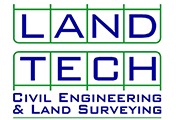Land surveying has seen many technological advancements in recent decades, including electronic distance measurement, global positioning systems, and robotic total stations. The next big advancement could be the use of unmanned aircraft systems (UAS) or drones.
In recent years, the biggest hurdle hasn’t been technology, but rather regulatory. Drones operate in federal airspace, and by law requires an FAA license to operate.
A recent article in Fortune Magazine indicates the FAA has worked with the UAS industry to streamline the approval process for granting licenses to operate drones. http://fortune.com/2015/08/09/faa-commercial-drone-permits/
Just one year ago the ability to operate commercial drones in the U.S. was more concept than reality. Only two companies in the country were cleared by the Federal Aviation Administration (FAA) to operate those types of drones, and they were located in the far northern hinterlands of Alaska. One year later, the commercial drone industry looks drastically different. On Wednesday the FAA announced that it had approved more than 1,000 applications from companies seeking to operate commercial drones, and currently approving applications at a rate of roughly 50 per week.
That news is significant, considering that roughly a dozen companies were approved to operate drones commercially at the beginning of 2015. Since then, the unmanned aircraft systems (UAS) industry and the FAA have worked to streamline the approval process. The agency has also loosened certain aspects of its commercial drone regulations to allow approved companies greater flexibility in how they use commercial drones.
Those efforts have driven a drastic uptick in the number of companies approved to fly under so-called “Section 333 exemptions” as well as a broadening of the applications for which these drones are employed. The Association for Unmanned Vehicle Systems International (AUVSI) recently examined the first 500 commercial drone permits issued by the FAA and found exemptions spanned 20 major industries across 48 U.S. states.
The AUVSI examination also revealed “general aerial surveying” constituted the largest sector for commercial drone permits issued by the FAA.
You can review the authorizations granted by the FAA via the Section 333 exemptions here: https://www.faa.gov/uas/legislative_programs/section_333/333_authorizations/
Drones have a great potential to impact the civil engineering and land surveying industries. It’s sure to be something we keep our eyes on for the future.

6 Comments
It is interesting that close to a dozen companies, have been approved at the beginning of 2015. I think using drones is a great idea. Being able to cut down on costs is definitely beneficial. Do you think that this is something your company will do?
Cheryl – We’re certainly keeping an eye on this technology. I think it’s just a matter of time before it’s a common tool in the surveyor’s tool box, just like GPS and robotic total stations.
I do think it is great that drones are being used for so many things, including land surveying. However, I imagine that it isn’t very practical unless the land being surveyed is fairly large. How large an area would you need to be surveying for it to really be cost effective to use a drone?
James – I believe there are two types of drones, one is a fixed wing that is more suitable for larger sites, and the other has rotor similar to a helicopter that are more suited for smaller sites. I assume drones will become more and more practical for land surveyors, like GPS has become. Thanks for the comment.
Without doing any serious research on it yet, my feeling general feeling is that a fixed-wing drone may only be useful for larger sites, maybe larger than 20 acres. The rotor-blade drones can hover, so I think they may be practical for sites as small as an acre. We really haven’t priced either type of drone yet, but I think for it to be cost-effective for the surveyor, it needs to be able to do a significant portion of the type of work we already do with conventional GPS and robotic total station methods. I suspect it can be a real time-saver in the field, but may take more time in the office to process the data and reduce it to CAD drawings.
I had no idea that surveyors were starting to use drones for their work. It’s really cool to see how technology can be so expansive for so many different fields, and this one definitely is no different! I’m sure that this makes the work go faster and will continue to change the dynamic and the processes that surveyors take. Thanks for sharing!
Concrete coring at KUB WWTP
Construction Progressing at KUB WWTP